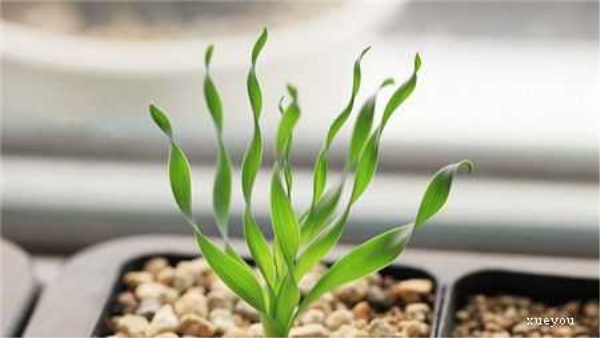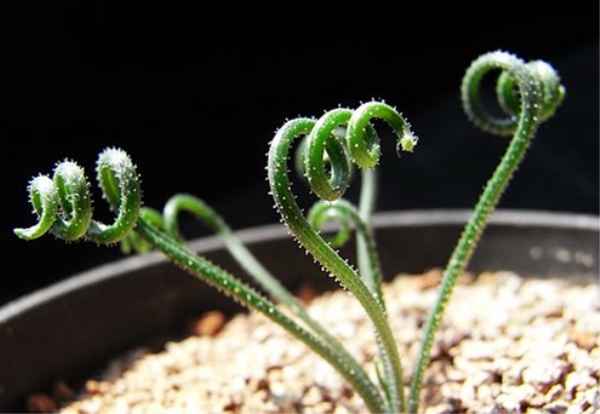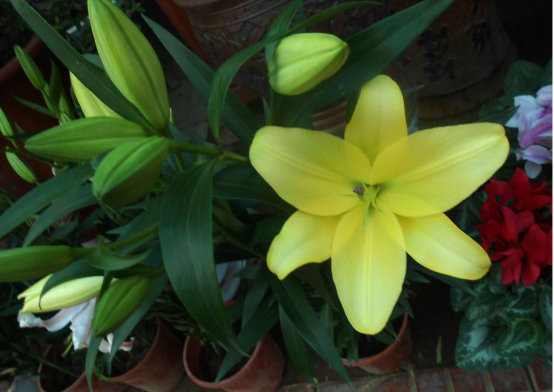Matters needing attention in culturing spring grass
There is a great demand for nutrients during the growth period of spring grass, so we need to apply mature dilute liquid fertilizer once a month to promote plant growth. When blooming in spring, you can spray some phosphate fertilizer to promote flowering.

The above is about the breeding methods of spring grass and points for attention introduction, flower friends have learned it? If you want to know more, please follow the four Seasons Plant Network!
How to raise spring grass? Culture methods and matters needing attention of Spring Grass
Spring grass
[FAQ] how to raise spring grass? What are the breeding methods and matters needing attention of spring grass?
[expert's answer] the breeding methods and points for attention of spring grass are as follows:
1. Temperature: no less than 5 ℃ can safely survive the winter.
2. Light: spring grass likes light, and sufficient light should be given during the growing period. if the light is not enough, it will make the leaves weak and the degree of curl is poor, so it is difficult to highlight the unique charm of spring grass. On the other hand, the leaves of the plants growing in sufficient sunshine are low and stout, twisted and twisted, with high ornamental value, but sunshade nets should still be built after April to avoid hot sun exposure and prevent leaf tips from drying up.
Spring grass
3. Water and fertilizer: spring grass likes a humid environment, and it is appropriate to keep the soil moist during the growing period without stagnant water. if there is a long-term drought and lack of water, the plant will not die, but the growth will stagnate, the leaves will yellowing, and even withered; while the basin soil will cause bulb rot for a long time. Water can often be sprayed to the plant to increase air humidity and prevent the top of the leaves from drying up. In summer, in order to avoid flooding in the rainy season, the flowerpot can be placed on the shelf or on a stage with a certain height, and pay attention to control watering to prevent the bulb from rotting due to stagnant water, but the pot soil can not be completely dry to prevent the bulb from drying up. The peak period of plant growth is from October of each year to April of the following year. Mature thin liquid fertilizer or compound fertilizer is applied once a month to provide sufficient nutrients to make the plant grow vigorously. After the flower is extracted in spring, 0.5% potassium dihydrogen phosphate solution is sprayed 2 to 3 times to promote flowering.
4. Pollination: after flowering, different plants should be selected for artificial pollination to make the plants bear fruit, and the seeds should be harvested after maturity, so as not to scatter them; if there are no seeds, the remaining pedicels should be cut off in time after flowering so as not to consume too much nutrients.
5. Change the basin: spring grass is generally changed once a year at the end of August. The basin soil is required to be fertile and loose, rich in humus, and has good drainage and permeability. It can be mixed with 3 portions of rotten leaf soil or peat soil, 2 parts of vermiculite or sandy soil, and mixed with a small amount of bone powder. Cut off the rotten root system when changing the basin, plant the bulb out of the soil 1 / 3 or so, pour water after planting and maintain it in a place with sufficient light. After that, pay attention to keep the soil moist, and soon new leaves will grow from the top of the bulb.
[conclusion] Spring grass is a kind of plant that likes cool and afraid of heat. It hibernates in summer. September to April is its growing period, but the winter temperature can not be lower than 5 degrees. I hope this article will be helpful to you.
Culture methods and matters needing attention of Spring Grass
Culture methods of spring grass: light and temperature
Spring grass likes light, if the lack of light will make its leaves weak, and the degree of curl is poor, loss of ornamental. And sufficient light can meet the growth needs of spring grass, making it twisted and full of ornamental. However, it is necessary to put up a sunshade net in summer to avoid scorching the leaf tip with strong light. Spring grass likes a cooler environment and is more afraid of heat. Generally, it can keep the temperature above 10 ℃ in winter, can grow normally, and can pass the winter safely under the condition of no less than 5 ℃. In summer, the plant begins to dormancy, the leaves will dry up, can be placed in a ventilated and dry place to spend the summer, after entering the autumn can grow again, normal management can be.
Soil
Spring grass likes rich and loose soil and requires soil rich in humus. Generally, rotten leaf soil or peat soil can be selected and mixed with knowledge and sand to ensure its good drainage, and some bone powder can be added to the soil as base fertilizer.
Water and fertilizer management
Spring grass likes a moist growth environment, during the growth period, it is necessary to ensure that the soil is moist but does not accumulate water, which will lead to the rot of spring grass bulbs, and be careful not to lack water, otherwise it will lead to stagnation of plant growth and yellowing of leaves. Can often spray water like spring grass plants to ensure high air humidity and timely drainage in the rainy season. Fertilization can be in the annual growth period, once a month to apply mature dilute liquid fertilizer, can be exuberant plant growth. When blooming in spring, you can spray some phosphate fertilizer to promote flowering.
Matters needing attention in the Culture of Spring Grass
Spring grass is generally propagated by sowing. After flowering, cross-pollination can be selected to make it bear fruit, and the seeds can be sown after taking out the seeds. It is important to note that if not to keep the seed, the spring grass can cut off the pedicel after flowering, reducing the consumption of nutrients.
Change the basin
Spring grass needs to be changed, which usually takes place in August every year. The root system needs to be trimmed when the pot is changed, and the bulb can be exposed to the surface of the soil when the pot is added. After replanting, it can be watered thoroughly and preserved in a place with plenty of light.
- Prev

Key points for the maintenance of Spring Grass
The growth of spring grass needs to be changed every year to provide it with sufficient nutrients. We generally choose to change the basin at the end of August, the basin soil requires fertile and loose, rich in humus, with good drainage and air permeability. Spring grass likes light, so we should give enough light during the growing period.
- Next

Culture of lilies
Environmental soil: cultivated lily is suitable for sandy soil with good drainage and rich humus content, and it is best to choose acidic soil, which is conducive to its better growth. Temperature: the best temperature for cultivating lilies is 1624 ℃. If it is lower than 5 ℃ or higher than 30 ℃, the lilies will stop growing.
Related
- Fuxing push coffee new agricultural production and marketing class: lack of small-scale processing plants
- Jujube rice field leisure farm deep ploughing Yilan for five years to create a space for organic food and play
- Nongyu Farm-A trial of organic papaya for brave women with advanced technology
- Four points for attention in the prevention and control of diseases and insect pests of edible fungi
- How to add nutrient solution to Edible Fungi
- Is there any good way to control edible fungus mites?
- Open Inoculation Technology of Edible Fungi
- Is there any clever way to use fertilizer for edible fungus in winter?
- What agents are used to kill the pathogens of edible fungi in the mushroom shed?
- Rapid drying of Edible Fungi

